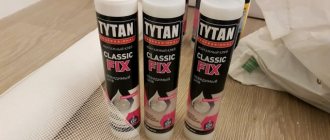Lubricant for gas taps: how to replace a gas tap in an apartment
To ensure that the equipment operates without interruption, and the rotation of the plug inside the valve is uninterrupted, sealants are used.
Lubricant for gas taps is selected according to several parameters, but first you need to understand the technical features of each type. Transfer of gas pipe with valve
Types and characteristics of lubricants
Sealed mixtures are divided into types, depending on operating conditions and purpose. They are divided into two main groups:
- Anti-friction.
- Sealing.
Any lubrication of gas taps is necessary for stable operation of equipment mechanisms. Sealing lubricants operate over a wide temperature range.
They provide reliable sealing of joints, prevent rubbing parts from coming into contact and withstand heavy loads.
Sealing compounds increase the service life of device parts and have high anti-corrosion properties, which allows metal elements not to collapse. In addition, this sealant composition does not cause corrosion when in contact with condensate.
The mixture contains a liquid base (petroleum oil, glycerin, synthetic oils) and a solid thickener (salts of fatty acids). In addition to the composition, the following elements are introduced: graphite, mica, fluoroplastic chips.
They increase the ability to tightly close existing gaps and reduce the coefficient of friction. The dropping point for lubricants is regulated by separate GOST standards.
According to the standards, the lubricant can be used at a dropping point of at least 15 degrees.
Applying sealant at the joints between the valve and the pipe
Each element of the gas valve has its own sealing grease. For shut-off and control valves, sealing grease must meet the following requirements:
- High resistance to temperature and chemical compounds.
- Possess high adhesion and water resistance.
- Be compatible with plastic and metal elements in the temperature range from 0 to 160 degrees.
Lubricants for cranes must have high wear resistance and anti-corrosion properties.
The sealant must also be compatible with plastic and metal elements, ensure reliable operation of the moving elements, and prevent wave-like movement.
The use of sealed lubricants on valves on a gas cylinder will ensure safe and long-term operation of the heating system as a whole.
Anti-friction lubricants have a less dense composition and are necessary for separating parts. This type of sealant does not allow the faucet elements to come into contact with each other, which means they protect the parts from mechanical damage and increase their service life.
Lubricant for installing gas appliances and valves in the house
Antifriction mixtures have the following technical indicators:
- Do not dissolve in petroleum products.
- Ensures operation of elements at temperatures up to 50 degrees.
- Available in fatty or silicone based.
- Does not have a corrosive effect on metal.
Solid oil or graphite is also added to the lubricant. They increase the sliding coefficient of parts and the ability to withstand large pressure differences. For heat resistance, synthetic oils with calcium soap are added to the anti-friction lubricant.
Lubricants are used during installation or assembly of gas equipment, heating systems, when moving pipes or replacing valves. Without an effective sealant, the system will not be safe to use.
How to replace a gas tap in an apartment
If problems arise in the operation of equipment elements, its complete replacement is required. Before replacing a faulty gas tap in an apartment, it is necessary to determine the cause of the problem.
Repairing an old gas pipe valve
The main rule that everyone should know is not to open the gas cylinder or tap yourself. This should be done by a specialist from the gas service company.
It is their responsibility to repair and replace valves, connect equipment, and carry out audit activities.
If you still do not wait for the technician, but decide to carry out a replacement, you will need to prepare the necessary tools and materials.
The first step will be the acquisition of the following tools:
- A pair of gas keys.
- Sealant. It is better to take a special graphite lubricant or grease.
- 1/2" internal thread plug.
Next, an audit is carried out to identify the problem area. If you sense from the smell that the valve is leaking gas, repairs can be carried out without completely replacing the valve. To do this you need:
- Close the valve so that gas stops flowing further through the system.
- Use a gas wrench to secure the outlet below the valve and hold it in a static position.
Capturing and removing part of the pipe with two wrenches
- Using the second wrench, install the locknut and coupling below.
- We unscrew the valve with a wrench until it can be easily operated by hand.
- Unscrew it completely and place a plug on the thread.
- Next you need to unscrew the exhaust valve.
- We take out the plug with the groove on the back side of the valve and push out the canonical plug.
- We clean the body, lubricate it with sealant, and reassemble it in the reverse order.
- We install the valve instead of the plug and push the coupling and nut into the working position.
Applying sealant to the threaded surface of a pipe
Now you can open the valve and check its operation, as well as for gas leaks.
If you are not satisfied with the operation of the old faucet, you can replace it with a new one. To do this, it is better to choose a valve of the same size, then the replacement work will be carried out according to the same scheme as during repair.
If the length does not match the previous dimensions of the crane, then replacement work will be carried out in the following way:
- The short thread is installed with a male thread extension. This will allow the gasket to be fixed on the flat surface of the extension, and not on the jagged side.
- The extension cord is connected with a gas hose to the valve. The joints of the connections are treated with sealant.
The device of the gas tap must be checked after replacement.
Checking equipment at the time of gas leak
An inspection of gas equipment will also be required if the tap near the stove periodically leaks, and it is impossible to determine the exact location of the leak.
To find out where the problem occurred, you need to smear soap foam on the joints. Where the foam starts to bubble is where there is a leak.
The detected malfunction must be eliminated as soon as possible, otherwise the gas may harm human health.
Safety regulations
Working with gas equipment has an increased level of danger, so safety rules must be followed. When carrying out independent work to replace or repair a valve on a pipe, adhere to the following rules:
- All manipulations with gas equipment are carried out with open windows.
Mandatory air ventilation in the room when working with gas
- Electricity must be completely turned off throughout the apartment.
- During work it is prohibited to smoke or light matches.
- Repair work is carried out only during daylight hours, ensuring good daylight.
- The door to the room where equipment replacement activities are carried out must be tightly closed.
- The public access valve must not be closed. This increases the concentration of propane and the risk of explosion.
- It is better to do the work collectively. This will speed up the process and minimize errors.
- If the gas equipment and pipe are old and there are visible signs of corrosion, you should not carry out any manipulations yourself.
- It is necessary to provide the repair work site with fire-fighting equipment.
Having a fire extinguisher in the kitchen will ensure safety in the home.
Compliance with safety rules is not just a requirement for reinsurance. These measures will help keep the home and people's health safe and sound.
So, replacing a gas tap yourself requires the owner to have certain knowledge and skills in this area, the availability of the necessary tools, as well as reliable, high-quality lubricant for the tap. The sealant will allow you to safely use the gas valve and increase the service life of the entire system.
Composition and capacity
Lubricants for industrial gas equipment include a liquid base and a thickener. The basis is:
- glycerol;
- petroleum oils;
- synthetic compounds.
Thickeners for compositions are salts of high molecular weight fatty acids or “soaps”.
To increase heat resistance and tightness, additives are included in the lubricant:
- mica;
- graphite;
- molybdenum;
- fluoroplastic chips and other components.
You can purchase lubricant in mini-packages or large containers. For example, Molykote 1102 is available for single use (50 g, 12 pieces per package), in containers weighing 1 kg and 25 kg.
The compositions are applied with a brush, spatula, gun, or using automatic equipment.
What and how to lubricate a gas valve on a stove or pipe in order to develop it
Gas equipment requires special attention and accuracy in operation: we should not forget about the many examples of household gas explosions. In 2018, on December 31, a similar disaster destroyed 40 apartments, people found themselves under the rubble when the frost outside was below 20 degrees. Therefore, if any problems arise with gas equipment, the best solution is to call a specialist.
Quite often, the breakdown turns out to be minor - the tap on the stove, riser or column turns tightly. Often repairs come down to replacing the lubricant. The craftsmen prudently do not disclose the brand, but from GOST standards the Miss Clean resource found out how to lubricate a gas tap without compromising safety.
What to lubricate
General requirements: the lubricant must withstand high pressure, be resistant to wear and frequent loads, and most importantly, be heat-resistant. This is what distinguishes the special product from ordinary graphite.
The standards offer the following options:
- Plitol M is a lubricant based on thickened petroleum oil and contains an additive that increases the wear resistance of the layer and parts. This product can easily withstand temperature loads of up to 150 degrees, a one-time increase to 180 degrees, however, it is intended only for indoor devices, because it loses its properties at temperatures below 0.
- For gas taps - a product for gas lines based on thickened castor oil. This lubricant only holds 50 degrees, which means it cannot be used on the stove. At the same time, the lubricant tolerates pressure up to 50 MPa, which makes it an excellent solution for valves on columns and risers.
- Cranol has similar characteristics to the previous type.
- LZ-162 is a multi-component lubricant based on petroleum oil, has maximum protective properties (withstands up to 90 MPa, retains its qualities in the range from –25 to +130 degrees) and is used in oil wells. If you somehow happen to have such a lubricant, it will be more than suitable.
If you pay attention to the composition, you can see that household lubricants contain thick castor oil. Ordinary mineral lubricant, as a backup option, can temporarily replace special lubricant for gas stoves.
Important: Lubrication is the most common problem in gas valves. However, similar symptoms appear when there is a mechanical malfunction of the device. Therefore, the resource mschistota.ru strongly recommends that you entrust the diagnosis to specialists.
What should not be used to lubricate
Non-mineral oils (vegetable, butter, etc.) are strictly not suitable for lubrication - this is a fire hazard!
Solid oil and lubricants based on it are not suitable for lubricating turntables on a stove. These products are semi-liquid and do not hold temperature well, they flow and can ruin the stove.
How to properly lubricate a faucet
The general algorithm for repairing any gas tap comes down to the following steps:
- Shut off the gas supply.
- Disconnect the power supply in the panel room. If access is blocked for some reason, then unplug all electrical appliances and lamps.
- Remove all flammable materials and utensils (including matches, solvents, etc.).
- Close the door to the kitchen and open the window.
- Disassemble the tap.
- Plug the riser pipe with a damp rag.
- Apply lubricant.
- Remove the rags and assemble the faucet.
- Ventilate the room.
Disassembling the crane requires experience and extreme care. If you need to lubricate the gas duct on the stove, you will have to remove the turntables (flags) and the front or top panel underneath them. The faucet device will open.
For Hephaestus-type stoves, there is no need to lift the panel with the burners - the front cover can be removed by itself, and quite simply, since it is attached with self-tapping screws. The taps are fixed with flanges with two screws - to remove them you will need a Phillips screwdriver.
Old "Brest" type slabs are equipped with a different fastening mechanism: there is only one screw, it goes into the coupling and tap. The device itself is most often conical, and the nuance is that, after removing the plug, you must carefully remove the spring and not lose it.
As a rule, there are ball valves on the riser and boiler. They are quite easy to disassemble - you need to remove the fastening screw and remove the mechanism.
You need to remove the plug from the tap and treat it with lubricant, being careful not to clog the holes.
Important: “Miss Clean” magazine reminds that, according to current laws, owners are responsible for the prevention and proper condition of gas equipment inside the apartment. Therefore, there is no need to wait for a scheduled inspection - call the gas service at least once a year, especially if the communications are already old.
Maintenance of equipment must be carried out regularly. As experts note, dirt, grease, debris quickly accumulate inside the stove, and sometimes cockroaches and even mice settle in.
A gas service specialist will handle this task quickly and efficiently. At your own risk, you may disassemble and lubricate the taps yourself. The easiest way to carry out the procedure is with valves on the stove itself (the gas needs to be turned off at the column). In any case, after all procedures it is necessary to ventilate the room thoroughly.
Where are they used?
Industrial gas equipment includes devices designed for transportation and storage, processing and distribution of gas. The main components of the complex are pipeline fittings, gas control units, pressure regulators, safety valves, gas analyzers, gas flow metering devices, boiler units. Seal lubricants are used to lubricate rotating equipment elements. They are one of the types of grease. Unlike oils, such formulations include thickeners and additives that enhance the properties of the substance. The thick composition of lubricants minimizes friction in rolling bearings, hinge, chain and screw mechanisms.
Greases are perfectly fixed on inclined surfaces; their density seals the joints of parts. They are able to withstand high temperatures. Premium class compounds used for gas equipment do not drip from the devices even if the operating temperature limit is exceeded.
Greases are divided according to their areas of application into the following:
- Antifriction - protecting mechanisms from wear. Depending on the conditions of use, they may have a combined set of properties: withstand frost or high temperatures, withstand the effects of chemically aggressive environments, and exhibit stability in conditions of high humidity.
- Sealing - necessary for sealing joints.
- Highly specialized - created for use in a specific industry, for example, food, chemical.
- Conservation - protecting equipment during shutdown.
Lubricants for gas equipment are classified as anti-friction and sealing lubricants. They must withstand loads, create a dense film between rubbing parts, ensure smooth movement, and remain on the surface of the joints.
Note! Lubricants can react with metal, causing additional corrosion. Such compositions are unacceptable for use in the treatment of gas systems. The lubricant should be as dense as possible and the moisture content should be minimal.
Do-it-yourself lubricant for gas stoves - Metalist's Guide
Repairing a gas stove with your own hands is prohibited by Russian law. True, criminal liability is not yet provided for; if an accident occurs, troubles are expected. In the hero city of Volgograd, one smart guy introduced combustion products from a water heater into the ventilation hole. 4 people died.
The authorities classified the case based on the article causing death by negligence. Gas service technicians have the right to replace equipment and perform service work. This is relevant, starting with connections and ending with switching to a different type of fuel.
Below are a couple of recommendations, not a user manual, just general techniques.
Installation of a gas stove with electric ignition
Darina, Hansa, Ardo – so different and at the same time the same. The repair of gas stoves by Hephaestus is exactly like the repair of Ariston; gas stoves are made up of standard units. It is enough to look at a single device to understand the circuit.
Have a reference book to help you properly maintain gas pressure. When set correctly, the flame is even and blue. Orange flashes indicate an imbalance in the fuel mixture.
If the settings are incorrect, the flame will fail (especially typical for carob ovens).
For those who have read the reviews of the VashTekhnik portal regarding gas instantaneous water heaters, independent repair of gas stoves will seem like child’s play! You cannot do it yourself, but you can clean the device.
The technician will have to clean candles, combustion sensors, burners, and sometimes nozzles. There are a lot of interesting things inside the gas stove. Anyone learning how to properly clean equipment should understand what we will see inside.
Under the gas stove table:
- Burners. They are often bolted to the gas stove table. Each burner consists of a lid, a divider, and an injector (nozzle). They are not rigidly fastened under the table; each is fitted with a steel or copper tube; the fastening is carried out like an American one. You will need a key of approximately 13 to remove the products. It is more convenient to clean if something is clogged inside. Beware of tearing off the head or thread - you will have to replace it. After assembly, check the tightness by washing. The procedure involves applying foam to the disputed nodes.
- There are two candles around the perimeter of the burner. One serves as ignition (due to a piezoelectric element or an electronic circuit), the second is a thermocouple, included in the combustion control circuit. It's quite easy to distinguish. The high-voltage spark plug is covered with a ceramic caftan so that the spark does not strike below a predetermined level. When the arc flows, you can see: the tongue of the discharge licks the body of the burner. Gas stoves with electric ignition will be properly grounded by a technician. Beware of using plumbing connections or connectors pierced with metal threads. During installation, the hoses are separated from the riser by special gaskets. Failure to follow the rule will easily provoke an explosion in favorable situations. We wrote in more detail, we remind you again. The candle with a thermocouple is covered with a bronze caftan that conducts heat. The faster the semiconductors cool down, the flame goes out, and the protection that cuts off the gas supply will work more reliably.
- Most often there is a collector under the table. A thick tube from which a line goes to any burner. The gas flow is controlled by solenoid valves. The number is usually equal to the number of burners. When the burner flame goes out, the rest will burn. The expediency of the decision can be challenged, but this is how it is done. Each solenoid valve contains an inductor. The thermocouple heats up, an EMF (tens of millivolts) appears, keeping the devices open. Complete activation procedure: turn the gas supply regulator, press down. We press the piezo ignition button, or the electronic circuit performs a set of procedures independently. We hold the handle for a fixed time. The thermocouple warms up, an EMF begins to be generated, the electromagnetic valve is held open due to the phenomenon discovered by Seebeck. As soon as the gas goes out, the sensor plug cools down and the gas supply stops. The process is inertial, we believe that the day is not far off, flame ionization sensors will begin to be used in gas stoves, allowing the protection to operate instantly.
- Similar to the gas manifold, there is a distribution valve panel inside. Single high-voltage wires run to each ignition electrode. Another way to distinguish a thermocouple: two wires with a thinner cross-section stretch to the sensor. The spark breakdown goes to the housing, the second ignition wire is superfluous. If the gas stove is deprived of grounding, we have a chance of getting an electric shock. The potential for fatalities is an additional reason to have the installation done by a professional. The collector is connected via connectors. There is protection against incorrect orientation of the plug; you can easily mix up some places. When you open the burner, a spark will jump on another divider. It’s not very pleasant, a flash of flame is possible.
- If the charge is generated by an electronic circuit, you will find a simple thyristor, diode, capacitor, and fuses inside. The circuit operates, powered by a capacitor charge with a subsequent burst of energy from the spark gap of the spark plug. Repair of electric ignition of a gas stove concerns the listed elements. The fault is easy to notice. Burnt elements are black or similar in color.
Setting up a gas stove for a different type of gas
Gas is endowed with two significant characteristics:
- The calorific value is determined by the composition. The higher the methane content, the lower the parameter. For natural gas, the calorific value is predetermined by the location where the natural resource is extracted.
- The pressure depends on the type of gas. Liquid requires higher. For the main line, the typical value is 13 mbar. The parameter ensures the correct operation of solenoid valves, injectors, and burners.
If the pressure is too high, the gas does not burn completely, soot and orange flames will appear. The system may not operate correctly. I have come across instructions recommending the use of a reducer to obtain 13 mbar from a balloon.
There are probably restrictions. It is not without reason that it is recommended to place two cylinders in parallel. Please note that the main gas is actually liquid, supplied through a reducer. It is pumped from tanks into containers from which houses are supplied.
Find out the wiring diagram for the house where you live. There is natural gas distributed centrally, which has lower cost, pressure, and calorific value. The pressure is assumed to be 13 mbar.
This aspect must be taken into account when installing and repairing a gas stove.
The reason to call professionals for installation and configuration is that the specialists know the parameters. Of course, a person with a certificate is also aware of local conditions.
Now imagine what will happen if you unknowingly connect the equipment incorrectly! It's a gas, stop joking. This is especially true in the outback, where neighboring houses may have different connections.
It is recommended to purchase a set of replacement injectors for different gas pressures. They described the process of boring jets with their own hands and mentioned that the law prohibits rework. The work is unsafe.
Before purchasing, ask your gas service for the parameters and ask the store if the equipment is suitable. It’s not too late to start making inquiries during the next cleaning. It's not a fact that everything was done correctly.
How to adjust jets. The size of the central hole changes. Less pressure, the hole becomes larger. Verticality and alignment must be maintained, otherwise gas will leak to the side, which will lead to an accident. It is appropriate to recall that in old Soviet gas stoves the jets are hidden deep inside.
The design of the burners is unusual. Between the nozzle and the divider there is a tube with a pair of ears attached to the frame. There is one frame for every two burners. In pairs, the pipes are attached with ears inside the housing. A bowl with a nozzle is placed at the lower end, and a divider is inserted into the upper end. The gas stove operates using a jet stream.
Propane-butane is heavier than air.
The peculiarity is that opposite the nozzle there is a tube with a radial cutout. Needed to unscrew the hex nozzle without using a long socket wrench.
In modern gas stoves, the jet is located under the flame. A different arrangement improves traction and discourages ordinary people from climbing inside the stove.
Repairing a gas stove with your own hands is a dangerous business.
Electric stoves today also look like a more appropriate option for summer residents.
How to repair a gas stove with your own hands? Do-it-yourself gas stove maintenance
It's no secret that during operation, gas equipment, like any other device, tends to fail.
Therefore, in this article I would like to give some advice to those who have their hands on their shoulders and for those who would like to save a couple of thousand rubles on repairing a gas stove.
After all, the services of a specialist can cost a pretty penny, but you can do the work he does yourself in about ten minutes.
Therefore, before you begin any manipulations with your beloved cooking appliance, be sure to turn off the lowering tap (the tap that is usually located on the wall, behind someone’s stove or hidden in the kitchen unit), just in case, open the window or window and disconnect the electric ignition cable, if equipped.
If the burner burns weakly
Well, now let's figure it out. The most common malfunction of gas stoves is that the burner flame disappears completely or partially due to clogged nozzles or gas burner dividers.
This happens due to inaccurate cooking - small holes are filled with boiled soup, milk, etc., clogged with crumbs, as well as during the process of cleaning the gas appliance with powders.
Areas of responsibility
The first and main thing that the reader should pay attention to is that the inlet valve in the apartment falls under the responsibility of GorGaz or a similar organization operating in the area where you live. Both the repair and replacement of valves, and their periodic inspection, and the connection of gas equipment (stoves, boilers, convectors, hobs) should be handled by the mechanics of this organization.
Once again: you carry out all actions with gas equipment at your own peril and risk. The consequences of mistakes can be the most severe: a household gas explosion is perhaps the most terrible event in an apartment building, often turning it into a heap of construction waste. If you have even the slightest doubt about your ability to complete all the work, and to do it quickly and correctly, invite a specialist.
- you have quite a lot of experience in locksmith work; in particular, you have had to change valves and valves under pressure;
- you know where the power is cut off in your apartment, and you have access to the switchboard and the machines in it;
- the gas pipe in front of your valve has no visible signs of corrosion;
- at your disposal are plumbing tools (at least two gas wrenches No. 1 and/or No. 2), sealing material for threads and grease or graphite lubricant -
the following text will help you replace or repair the gas stove tap yourself.
Gas valve lubricant
Due to the fact that the law strictly prohibits independent intervention in gas equipment, the article is of a purely informational nature for people with a curious character who are interested in knowing everything.
One of the mandatory attributes of the gas system in the house is a supply pipe to gas equipment and a disconnect valve that shuts off the supply of “blue” fuel. To stop the flow of gas through the pipe, just turn the handle, while the tap should prevent any leakage.
The locking element in such devices is a conical spool (plug), tightly ground to its seat in the body. Currently, ball valves are used for these purposes, which do not require maintenance, and in the case of a plug valve, it requires lubricant for gas valves and grinding of the spool to the seat.
You will learn in this article what kind of lubricant to lubricate the gas valve and how to properly grind the plug onto the conical hole in the body.
Disconnect valve device
To correctly imagine why and how the plug valve in the supply pipe to gas equipment is ground in and lubricated, let’s look at its structure.
Rice. 1. 1) - housing with an outlet threaded fitting. 2) - spool rod with a square for the handle. 3) - top cover. 4) — pressure washer, 5) — nylon gasket, 6) — stuffing box.
The valve design is simple to understand; a cork cone valve (2) is seated in a seat in the valve body.
When the handle is turned to the “open” position, two outlet fittings are connected through a through groove in the plug body. The spool is machined as a single unit with the drive rod for connecting the handle. At the end of the rod there is a slot or square for its fastening. The tap is closed from below and from above with a threaded cap.
In addition, in the upper part there is an stuffing box seal (6), a clamping washer (4), which presses the stuffing box against the top cover (3), a nylon gasket (5) is necessary so that the stuffing box does not rub against the end of the spool.
Before putting the disconnect valve into operation, it is necessary to grind the cone plug into place in the housing socket and lubricate it with lubricant for gas stove taps before assembly.
Lapping of plug valves
Fig.2. Scouring of the surface of a plug valve before and after grinding.
Lapping of plug valves is carried out in 2 cases:
- Scheduled inspection with disassembly and gas leaks;
- The presence of leaks is checked by washing the tap joints and inflating a soap film to determine the amount of leakage.
In the case of preventive work, it is enough to grind the plug in place with micro-grinding powder (see Table 1) or thin GOI paste (see Table 2). Grinding powders are made of glass, corundum or a mixture of them. The basis of GOI lapping paste is chromium oxide. The abbreviation of the paste GOI stands for (State Optical Institute), its composition can be seen in the table. No. 2.
| Groups | Numbers | Groups | Numbers |
| grain | Grit size µm | grain | Designation |
| Grinding | Grinding powders | ||
| Glass, corundum, or a mixture of both | |||
| » | 63 — 50 | » | M63 |
| » | 50 — 40 | » | M50 |
| Micro grinding powders | |||
| » | 25-28 | M 28 | |
| » | 18-20 | » | M 20 |
| » | 12-14 | » | M 14 |
| » | 10 | » | M 10 |
| 7 | » | M 7 | |
| 5 | » | M 5 |
| Percentage composition. | Rough | Average | Thin |
| Chromium Oxide | 81 | 76 | 74 |
| silica gel | 2 | 2 | 1,8 |
| stearic acid | 10 | 10 | 10 |
| split fat | 5 | 10 | 10 |
| oleic acid | — | — | 2 |
| bicarbonate of soda | — | — | 0,21 |
| kerosene | 2 | 2 | 2 |
Rice. 3. Abrasive powders and paste GOI.
What is polishing ability
The standard test for polishing ability is carried out as follows: chaotic movements are carried out with a hardened steel or brass plate on a cast iron plate measuring 400 by 450 mm. in total, giving 40 meters of path at a certain pressure. The coarse paste removes approximately 40 microns of metal. medium, about 5 microns, thin 0.25 microns.
Lapping procedure
Fig.4. a) - plug, b) - lapping with a holder, c) - lapping with a special wrench.
Plug taps are manufactured in 3 types: with a cast iron body and a brass plug, a brass body and a brass plug, and completely made of cast iron.
The grinding procedure is as follows:
- If the tap is twisted from a pipe, then the body is clamped in a yew with little force so as not to damage the body, with the larger diameter of the cone upward:
- Medium GOI paste is diluted with kerosene and applied evenly to the body of the plug with a brush;
- The knob is connected to a special threaded hole at the bottom of the cone;
- The plug is inserted into the body and rotated several times with light pressure;
- Why do 5-6 movements of the hand approximately 180°? If there are no serious grooves on the plug or body, then this is quite enough;
- Remove and inspect the cork; if black grooves of paste appear on it, you need to wipe the parts and try again until the blackness disappears;
- Then thoroughly wipe the plug and body dry. Apply several chalk longitudinal stripes to the cone, insert the plug and turn it, then inspect it; the chalk notches should be evenly distributed over the entire surface of the mating parts;
- After that, thoroughly wipe the mating surfaces again and, after applying sealing lubricant for gas taps, are assembled. You need to tighten the threaded holes with tow or fumig. tape is better with sealing lubricant. Sealing grease for gas taps can be purchased at a specialized plumbing store or ordered on numerous online resources.
It is finally checked for leaks with a soap solution; inflating a bubble is not allowed.
What lubricant is used for gas valves
In order for the faucet to work correctly, it is necessary that the rotation of the plug in the faucet body occurs without effort, ensuring a reliable seal. For these purposes, special sealing and antifriction compounds are used.
Sealing lubricants have a stronger concentration and are used to seal mating parts. Anti-friction lubricants are less viscous and are designed to separate moving parts. Lubricants must ensure reliable operation when heated to 300C.
Solid substances such as graphite or fluoroplastic chips are added to the sealing composition. Anti-friction lubricants can be fatty or silicone based.
Lubricant for gas valves LZ TU 38-101316-78
Designed to lubricate the rubbing surfaces of the body - shutter - plug. In operation, it is necessary to rotate the rubbing parts once every 3 months to prevent coking. The composition includes industrial castor oil up to 95%, lime and water fractions.
Technical characteristics: Homogeneous viscous mass from dark yellow to yellow. mechanical impurities no more than 0.5%. The lubricant perfectly protects against the aggressive environment of gas mixtures, but is a weak sealant. Where to buy lubricant for gas taps. Lubricant can be purchased on specialized Internet resource sites or dealerships selling plumbing equipment.
Sealing paste 131-435 TU6-05-11370935-601-97
Purpose: neutralization of gas leakage through leaks that occur during operation. The paste is available in three types:
- Type 1 (heavy) - elimination of leaks through which gas can escape in ball valves. Can be used as a preventive measure to prevent malfunctions. Operating temperature from - 60 to + 120. Can be used to eliminate significant leaks;
- Type 2 (medium) - eliminates leaks in ball and plug valves operating with gas condensate, used to eliminate leaks as a preventive measure. Operating temperature - 60 + 100C;
- Type 3 (light) - used to eliminate leaks in ball and plug valves that have arisen, suitable for lubricating rubbing surfaces and spindle feed. Used to prevent leaks: used at operating temperatures from - 60 to + 80C;
- Type 4 (super sealer) – to eliminate large leaks of ball valves operating in contact with gas condensate at critical temperature conditions from - 70 to + 150C. Can also work in emergency situations and during hot work.
Rice. 4. Sealing paste 131-435 TU6-05-11370935-601-97.
Results of the work done
After gas supply and control washing, no gas leaks were detected! The faucet is sealed and works much more pleasantly, without jamming!
A positive feature of Soviet gas taps is their long service life and maintainability. However, such a faucet requires regular maintenance, since the tightness of such a device is ensured by grinding the faucet plug to the body; read more about this in our article.
The appearance of a gas smell in the area of the plug valve is not a reason to replace it, but you will still have to call a gas service representative to eliminate the cause of the leak.
This article describes step by step the process of revising the two most popular gas plug valves: coupling and tension. Please note that this article is not a call to action, but is offered solely for informational purposes, since gas-hazardous work must be carried out by specialized organizations that have the necessary permits. It will be useful to those who want to personally verify the quality of the tap inspection performed by the gas service.











